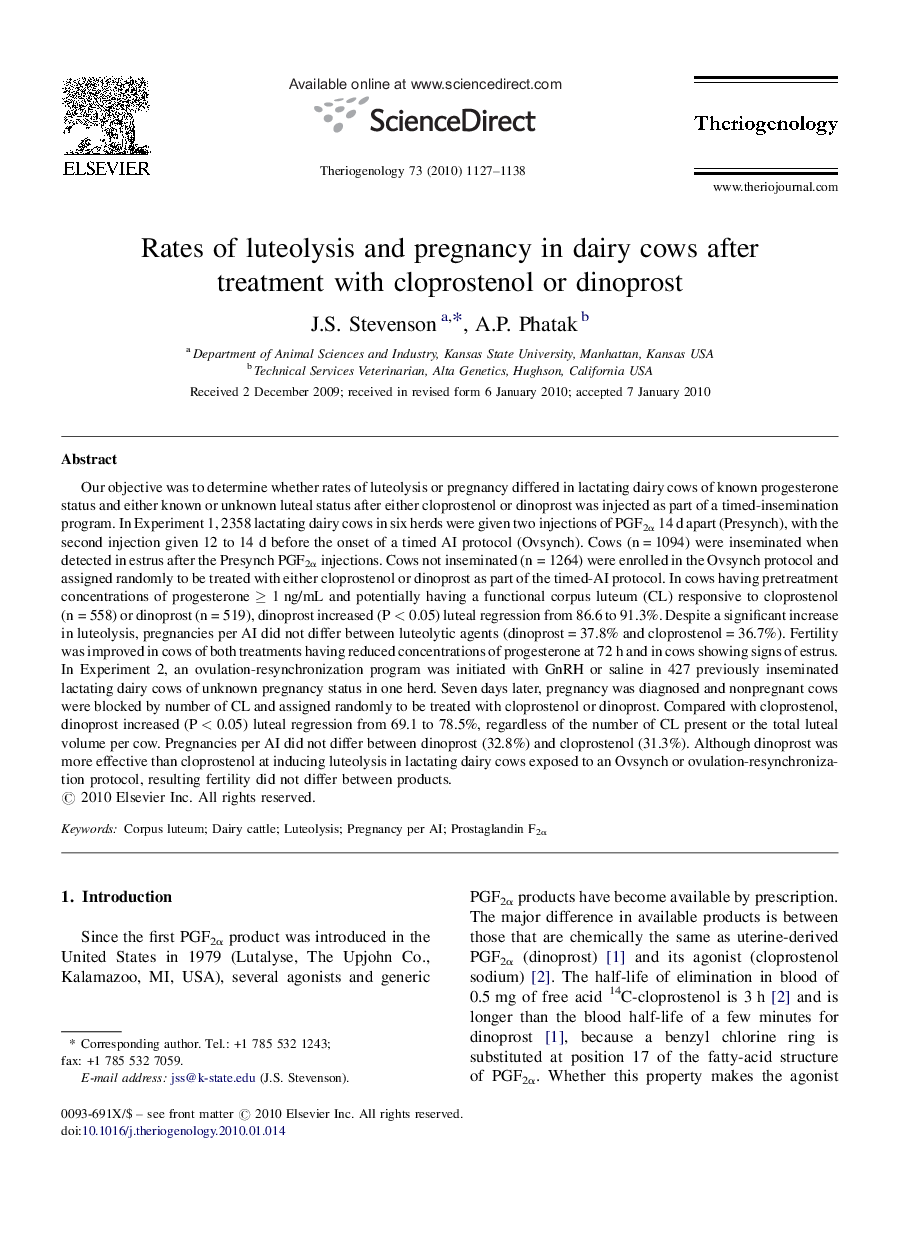| کد مقاله | کد نشریه | سال انتشار | مقاله انگلیسی | نسخه تمام متن |
|---|---|---|---|---|
| 2097902 | 1082572 | 2010 | 12 صفحه PDF | دانلود رایگان |

Our objective was to determine whether rates of luteolysis or pregnancy differed in lactating dairy cows of known progesterone status and either known or unknown luteal status after either cloprostenol or dinoprost was injected as part of a timed-insemination program. In Experiment 1, 2358 lactating dairy cows in six herds were given two injections of PGF2α 14 d apart (Presynch), with the second injection given 12 to 14 d before the onset of a timed AI protocol (Ovsynch). Cows (n = 1094) were inseminated when detected in estrus after the Presynch PGF2α injections. Cows not inseminated (n = 1264) were enrolled in the Ovsynch protocol and assigned randomly to be treated with either cloprostenol or dinoprost as part of the timed-AI protocol. In cows having pretreatment concentrations of progesterone ≥ 1 ng/mL and potentially having a functional corpus luteum (CL) responsive to cloprostenol (n = 558) or dinoprost (n = 519), dinoprost increased (P < 0.05) luteal regression from 86.6 to 91.3%. Despite a significant increase in luteolysis, pregnancies per AI did not differ between luteolytic agents (dinoprost = 37.8% and cloprostenol = 36.7%). Fertility was improved in cows of both treatments having reduced concentrations of progesterone at 72 h and in cows showing signs of estrus. In Experiment 2, an ovulation-resynchronization program was initiated with GnRH or saline in 427 previously inseminated lactating dairy cows of unknown pregnancy status in one herd. Seven days later, pregnancy was diagnosed and nonpregnant cows were blocked by number of CL and assigned randomly to be treated with cloprostenol or dinoprost. Compared with cloprostenol, dinoprost increased (P < 0.05) luteal regression from 69.1 to 78.5%, regardless of the number of CL present or the total luteal volume per cow. Pregnancies per AI did not differ between dinoprost (32.8%) and cloprostenol (31.3%). Although dinoprost was more effective than cloprostenol at inducing luteolysis in lactating dairy cows exposed to an Ovsynch or ovulation-resynchronization protocol, resulting fertility did not differ between products.
Journal: Theriogenology - Volume 73, Issue 8, May 2010, Pages 1127–1138